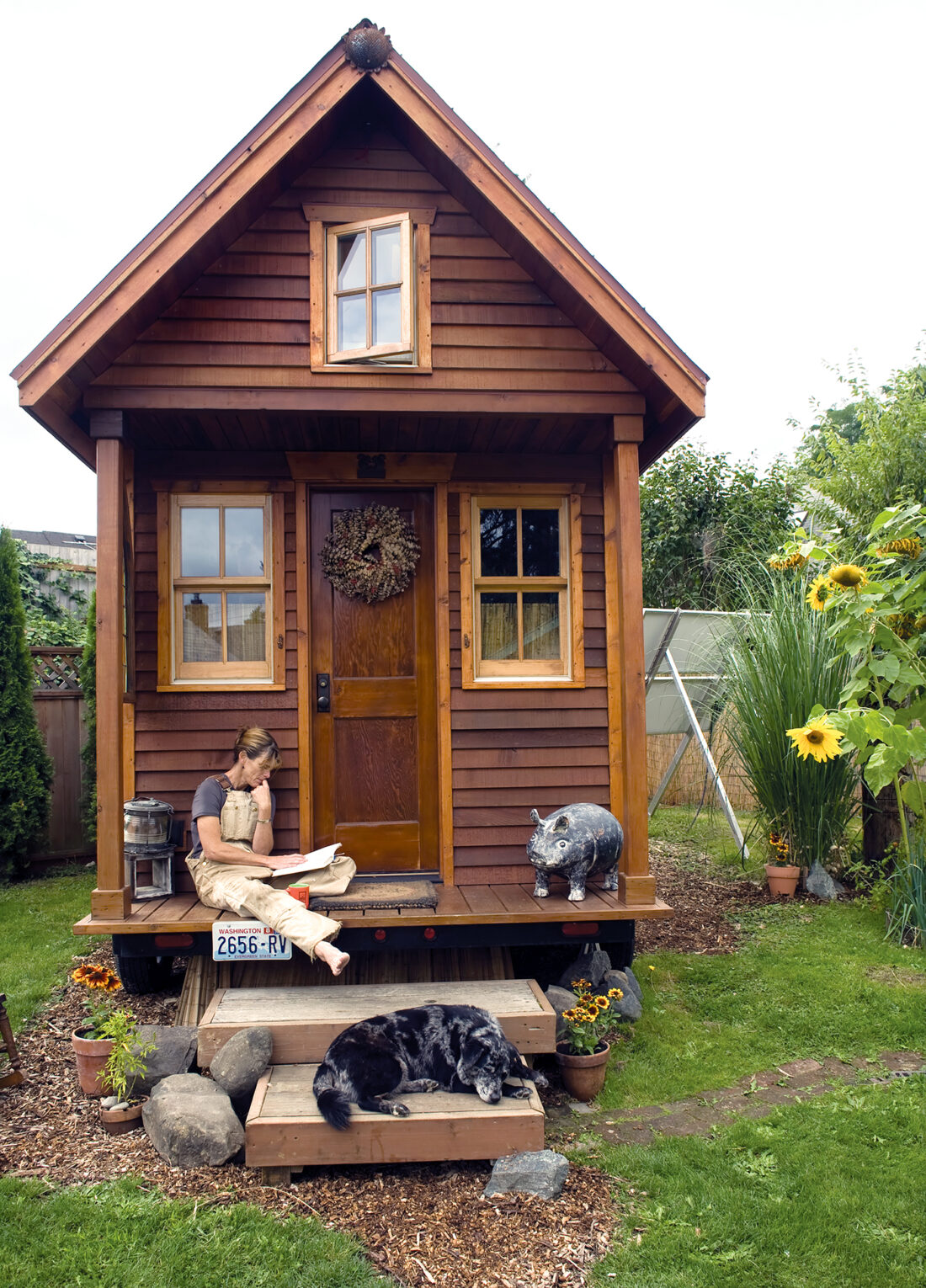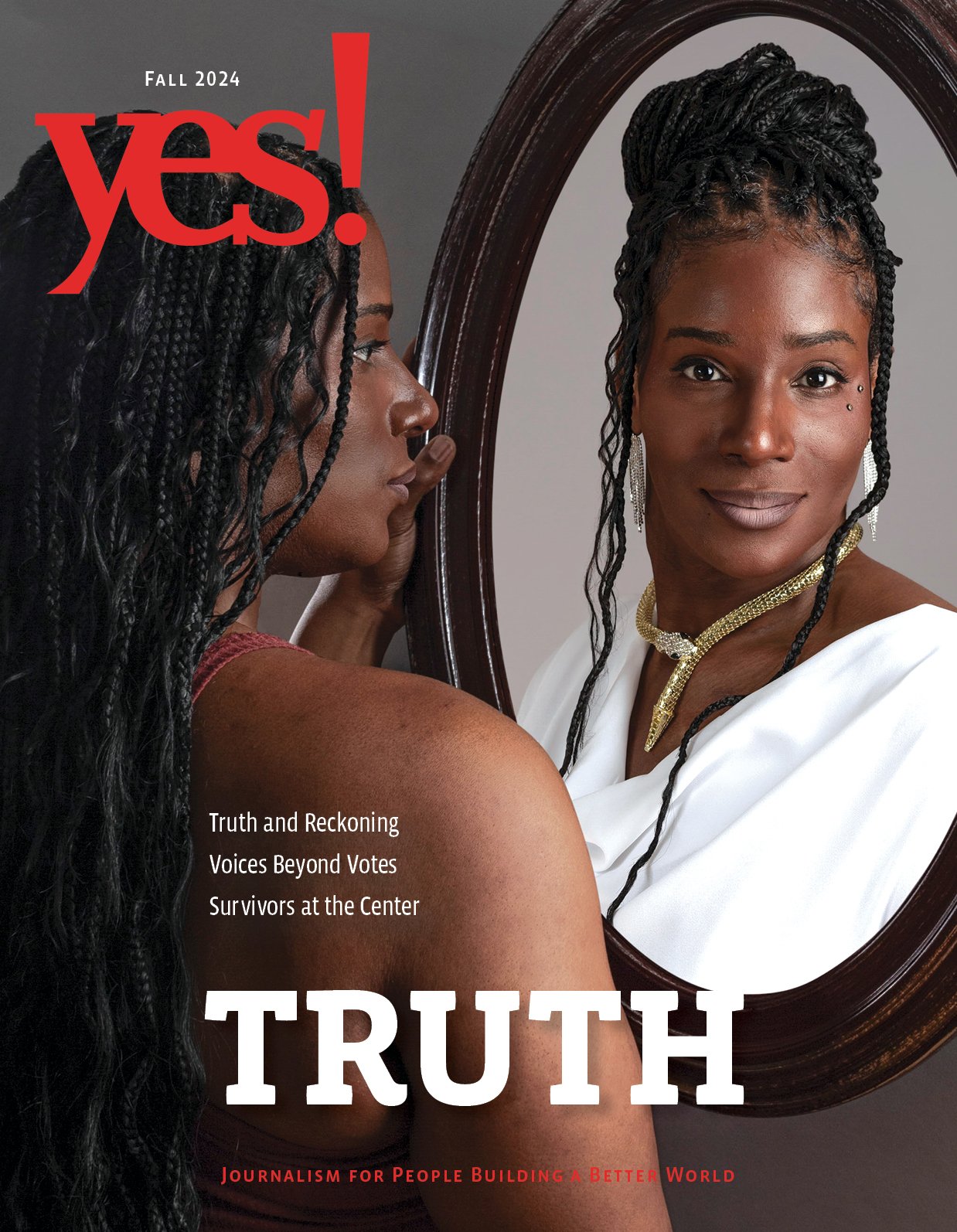Sustainable Happiness:
- Living Large in a Tiny House
- Share

When she sold a three-bedroom home and moved into this 84-square-foot house in Olympia, Washington, Dee Williams found freedom.
Photo by Betty Udesen
Living Large in a Tiny House
Dee Williams doesn't need a big house to be happy. Instead she found happiness in a 84-square foot house on wheels.
In 2003, Dee Williams was a classic slacktivist. She says so herself. Yes, she was passionate about social justice and environmental issues, but she spent most of her free time driving back and forth to Lowe’s and Home Depot for materials to remodel her three-bedroom house in Portland, Oregon. “I would feel like a grand national champion because I’d found a great parking space, or gotten a really great deal on a piece of plywood.”
Then events conspired to deal out a dose of humility.
She went to Guatemala and helped build a school, a friend’s emails from Uganda brought news of malaria and hungry children, and a very dear friend got cancer. It made her remodeling concerns seem trivial.
“He was getting sicker and sicker, and I didn’t have the time or the money to really throw myself into helping him. I was spending a lot of time and money on my house. So the house was the easiest thing to try to get rid of.”
In 2004, Williams sold her bungalow, shedding a mortgage payment of over $1,000 per month, and bought plans for an 84-square-foot house on wheels. It cost her $10,000 to build, a quarter of which went for photovoltaic panels that generate her electricity. Now her house is paid for, and her monthly bills total about $8—for heating.
“The more intentional you are in your choices, the more every change makes room for more changes.”
Even with the economic freedom she gained, it wasn’t easy to leave her house. “I loved my house and I liked my community in Portland.” And she knew that day-to-day life in the tiny house would be very different. “I’m going to have to carry water, I’m going to have to deal with my compost toilet , find a place to shower.”
“It was scary,” she admits. “But I also felt like, God! This is so cool!”
Leaving her stuff behind was not that hard for Williams. It was liberating. She got rid of photos, old love letters, her college letter jacket—“all that crap that you have because it reminds you of who you used to be.” Her friends and family have quit giving her things for Christmas , she says, “unless I get some kind of, you know, short fork!” She allows herself to own no more than 300 items, and she keeps careful count. “Not because I have obsessive-compulsive disorder,” she laughs, but because she once bet a friend that she had less stuff than he did. She’s kept count ever since.

Photo by Betty Udesen.
The hardest part of her drastic downsizing, Williams says, was the loss of autonomy. “I moved into somebody else’s backyard, which felt a little bit like the kind of thing a 25-year-old would do, not a 40-year-old. That’s been the biggest area of growth for me—living in a small house in somebody’s backyard and having to ask for water.” But it’s okay, she says. It’s brought her into closer relationship with her neighbors. “The neighbors on this side,” she says, pointing to the east, “I helped them build a French drain last year. The neighbors on the other side, I built them a chicken coop. It’s easier to participate when you’ve got more time.”
The big gain, though, was the gift of living intentionally. “It’s kind of a jazz-up,” she says. “The more intentional you are in your choices, the more every change makes room for more changes. It doesn’t make me feel bad about myself. I just love that there’s this endless potential. To see that you have this power. You get to choose what you want. That’s been cool.”
So what will Williams choose next?
She’s thinking of downsizing to a gypsy wagon that wouldn’t have the sleeping loft, “only because sometimes I feel like that’s a lot of wasted space—and I’d have a lower heating bill, greater economy of space. And I’d be just as happy in a smaller space.”

|
Carol Estes
is a former managing editor and contributing editor at YES! and is the founder of University Beyond Bars.
|

